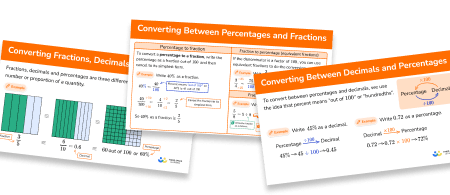FREE DOWNLOAD
Rounding Decimals Worksheet

Help your students prepare for their Maths GCSE with this free Rounding Decimals worksheet of 44 questions and answers
- Section 1 of the Rounding Decimals worksheet contains 36 skills-based questions, in 3 groups to support differentiation
- Section 2 contains 4 applied Rounding Decimals questions with a mix of worded problems and deeper problem solving questions
- Section 3 contains 4 foundation and higher level GCSE exam style Rounding Decimals questions
- Answers and a mark scheme for all Rounding Decimals questions
- Follows variation theory with plenty of opportunities for students to work independently at their own level
- All questions created by fully qualified expert secondary maths teachers
- Suitable for GCSE maths revision for AQA, OCR and Edexcel exam boards
Unlock access to download your free resource
You can unsubscribe at any time (each email we send will contain an easy way to unsubscribe). To find out more about how we use your data, see our privacy policy.
Rounding decimals at a glance
Rounding decimals involves approximating a decimal number to make it easier to read and work with. It is common to round decimals to the nearest whole number, nearest tenth, nearest hundredth or nearest thousandth.
In order to round decimal numbers, we can picture where the number would appear on a number line to help us decide whether to round up or down. In general numbers 5 or greater round up and numbers 4 or less round down. For example, when rounding numbers to 2 decimal places, we look at the next decimal place value, the thousandths. If the number in the thousandths column is 5 or greater we round up. If it is 4 or less we round down.
As an alternative to rounding to a given number of decimal places, we could round to a given number of significant figures.
Looking forward, students can then progress to additional number worksheets, for example an equivalent fractions & ordering fractions worksheet or simplifying fractions worksheet.

For more teaching and learning support on Number our GCSE maths lessons provide step by step support for all GCSE maths concepts.
Do you have GCSE students who need additional support?

There will be students in your class who require individual attention to help them achieve their target GCSE maths grade. In a class of 30, it’s not always easy to provide.
Help your students feel confident with exam-style questions and the strategies they’ll need to answer them correctly with personalised online one to one tutoring from Third Space Learning
Lessons are selected to provide support where each student needs it most, and specially-trained GCSE maths tutors adapt the pitch and pace of each lesson. This ensures a personalised revision programme that raises grades and boosts confidence.








